Adak, Alaska: day 2
Monday, September 7, 2015 (Labor Day)
Since the sun doesn’t rise until 8:15 a.m. and I’d had an eventful first day on Adak, I sleep in and then go for a walk in the neighborhood. The houses in this subdivision are basically all the same: either off-white with a blue roof, or tan with a red roof.
All of them have a solarium attached to the dining room. It feels a bit like an afterthought because it’s not really integrated into house; instead you access it through a door as if you were stepping outside. The solarium isn’t heated so you wouldn’t be very comfortable sitting out there in the winter unless you bring a portable heater. But it could be used to grow plants because temperatures don’t drop much below freezing here. I don’t know how many people have used their solarium for that purpose, but I cannot imagine that among the thousands of people who’ve lived in these housing units over the years there haven’t been a least a few with a green thumb.
However, I see no sign of gardening anywhere on the island. Cousin Shannon says she’s heard of people growing vegetables. Somebody even got tomatoes to ripen--quite a feat in a place that on average only has 76 sunny days a year. As I mentioned yesterday, Adak is in USDA hardiness zone 8 so the weather is mild enough to grow a great many things. And there’s plenty of water: It rains or snows on 264 days a year vs. the U.S. average of 100. The average annual rainfall is between 54 and 64 inches (the Internet sources I found can’t seem to agree).
The limiting factor on Adak is the wind. And it can be quite a doozy. During my 5-day stay the wind is benign, especially on the flatlands near town. In some exposed spots higher up, I get an inkling of what the wind might be capable of here. After all, Adak is nicknamed “the birthplace of the winds.” Sustained wind speeds of 20 mph are not uncommon. Gusts that seem to come out of nowhere, called “williwaws,” are said to be strong enough to knock people over. One particularly violent williwaw ripped the anemometer off the tower at the airport so nobody knows what its speed was, but gusts can exceed 110 miles per hour.
Knowing this, it’s easier to understand why there are virtually no trees on Adak and the other Aleutian islands. Because of the frequent precipitation, the soil is almost constantly wet. Even if a tree managed to grow to any size, a strong gust would quickly uproot it. All the trees that exist on the island—and there aren’t many—were planted. Without exception, they’re conifers and they look stunted. Later in the day, Elaine takes me to the Adak National Forest. What a hoot, as you will see.
On my morning walk, I notice how much rust there is. Constantly high humidity and salt in the air will do that. As a photographer, I find rust singularly beautiful, but if I owned a home or car here, it would be the bane of my existence.
Near “our” subdivision I find a small playground. I wonder how much use it gets. In the Navy days, there was an elementary, a middle and a high school. Now there’s only one combined school. Classes will begin tomorrow. Elaine says there are 24 students and 3 teachers this year. In the spring, the high school graduating class consisted of one girl. Most older kids get sent to school on the mainland. They either live with relatives or they go to a state-run boarding school. Shannon knows a guy who went to one of them, and he says a lot of underage drinking goes on there. That doesn’t surprise me. Alcohol abuse has always been a serious issue in Alaska, especially in rural areas—the “bush,” as they say. Oddly, it’s the same term they use in Australia.
Near the playground I see this curious-looking building. A miniature solarium! It turns out it was a bus stop for school kids during the Navy days—completely enclosed so they wouldn’t be exposed to the weather.
Outside the bus stop I spot this clump of moss: so green, so perfect. Have I mentioned that it rains a lot on Adak?
Finally some flowers:
A gardener must have lived here at some point. The house looks abandoned now.
Pearly everlasting (Anaphylis margaritacae) and northern yarrow (Achillea millefolium var, borealis) growing in a crack in the asphalt. There cannot possibly be much soil there!
At noon Elaine picks me up in her Jeep. Our first stop is her house. She has to add more wood to her smoker.
Today she’s smoking salmon eggs (roe).
In her dining room she has a rack of smoked salmon that is being air-dried. I had some the night before, and it was out of this world: the rich flavor of salmon combined with a spicy note of charred wood. It turns out that Elaine used cottonwood that had washed ashore. With almost no trees on the island, she relies on driftwood to fuel her smoker.
After tending to her smokehouse, Elaine takes me up to the water tanks on the big hill behind her house. On the way, I get great views of the central and southern part of Adak: mountainous and virtually impenetrable. I’m reminded of both Scotland and Hawaii.
In the other direction I see the comical-looking pier at the end of the runway. Its equipped with warning lights that alert pilots that they’re about to dive into the ocean. Or some such thing. In any case, it’s not a pier you can walk out on. In fact, you’re not even supposed to stop your car on that stretch of road (the road separates the runway/airport from the beach).
The two water tanks on top of the hill supply the subdivisions below. The entire system is gravity-fed. Similar tanks exist in other spots on the island. They were built by the Navy, like all of the infrastructure on the island.
I like the touches of color. They’re much nicer to look at than, say, a uniform gray.
But the real reason for coming up here are the panoramic views of town. I’m speechless. Which is a good thing because the wind is making quite a ruckus and I would have to shout at Elaine to make myself heard. The wind is so strong I have to put my camera on the tripod and push down on it to prevent camera shake.
Immediately I think “monopoly houses.” They do look like toys from up here, easily blown about by the wind. But looks are deceiving. The houses in the foreground were built in the 1960s and have withstood many a storm.
It’s easy to see how the use of color changed as successive subdivisions were built. The oldest houses are plain and either light blue or light tan. Newer subdivisions have a more attractive design and a deliberate color scheme, from the blue-and-brown of the Flintstone houses (on the right in the photo above; on the left in the photo below) to the pastel yellow of the subdivision closest to the beach to the bright blue and red roofs of the 1980s subdivision our unit is in.
The town looks friendly and inviting from this lofty vista point, not unlike the towns in Iceland I’ve seen in photos. But many houses are empty now. The subdivisions with the Flintstone houses and the pastel yellow ones near the beach are completely abandoned. Knowing this adds a tinge of melancholy to what is otherwise one of the highlights of my visit.
Elaine, who is of Aleut descent, says the work her generation is doing may not be appreciated by younger generations now but that someday they hopefully will realize the value of owning this land. (As I mentioned in my previous post, the former Adak naval base was transferred to the Aleut Corporation in 2004.) It’s hard to know what the future may hold for Adak, but there is hope that new fisheries may be opened up or that a major oil company will utilize the island’s existing infrastructure for something like a forward supply base for drilling operations in the North Pacific or Bering Sea.
From the future we return to the past as we head to what the locals call “the Seven Doors of Doom.” During the Cold War, these bunkers housed nuclear depth bombs that could be dropped on Soviet submarines leaving the Kamchatka Peninsula. I don’t know what’s in the bunkers now—they’re probably empty—but at least a few are used by contractors who monitor the ground contaminant levels in off-limits areas. (The cleanup will continue for decades to come, with Navy contractors making periodic visits to do their work.)
I call this color “Adak orange.” I’ve never seen rust like this before, but it’s all over the island.
See Elaine’s Jeep in the photo above? To the right is another bunker. This is where the soldiers in charge of guarding the Seven Doors of Doom lived. It’s dark inside but Elaine has brought a powerful spotlight so I can take photos. Reminders that real people lived and worked here are everywhere. I don’t get a creepy vibe, but I feel a bit lost, unsure of what to think. I do know what I wouldn’t have wanted to eat, hang out and sleep in a place with no windows. (The light you see coming in on the right in the photo below is from a metal hatch that would have been closed when this was an active installation.)
Mess hall (very small)
Bunk room, one of five
Next stop: Contractor’s Row. After the Aleut Corporation took over the naval base in 2004, they hired a salvage company to remove whatever valuable metals were easily accessible. Unfortunately, this particular contractor took a brute-force approach and caused much more damage to the buildings than was necessary. The leftover scrap from their operations was deposited here. Over the years, more garbage has accumulated even though this is not an official dump. Someday alien archeologists might dig here to understand human civilization. Good luck with that.
About 10 years ago, a fire burned a huge pile of tires a contractor was supposed to haul off the island. The remaining rims and steel cords from inside the tires have rusted to a glorious “Adak orange.”
Nature cannot be denied
Next we head to what during the Cold War was one of the most heavily guarded (and secret) installations: an underwater listening post. Innocuously called NAVFAC (Navy Facility), it was connected by underwater cables to hydrophone arrays mounted to the sea floor. The goal of this sound surveillance system was to track the position of Russian submarines over hundreds of miles.
Who knows what went on behind this door
Office
Not sure what this space was used for
Gym
Peeling paint can be very photogenic
Many rooms still have equipment in them whose purpose I can’t even guess at. In the next photo you’ll see the raised floor typical for this installation. Many rooms had such raised floors, either for cables or pipes.
Again, I’m not sure what this equipment was used for but there are warning signs about wearing sound protection so it must have generated a lot of noise:
Outside the officer’s mess I spy four trees. The fact that I even notice them shows you what a rare sight trees are on Adak. Elaine thinks the one of the left had its top cut off because somebody wanted a Christmas tree.
On our way to the Adak National Forest, I ask Elaine to stop the car so I can photograph this stunning panorama. The body of water on the left is Kuluk Bay, and you again see the funny pier with the warning lights for the airport.
Finally we are at the Adak National Forest. The sign reads “You are now entering and leaving the Adak National Forest.” Emphasis on entering and leaving. Yes, this stand of trees is it. “Adak National Forest” is not an official designation. It’s a joke that was started in the 1960s when somebody with a sense of humor planted these trees next to the pet cemetery.
Indeed, Adak has a pet cemetery. In fact, it’s America’s westernmost pet cemetery—just like Adak is the westernmost municipality in America and the McDonald’s in town was the westernmost McDonald’s in the world. You get the idea: Adak is far out west.
There was a funny story on Huffington Post this summer by Julia O’Malley, an Anchorage-based writer, who had this reaction when she first visited the pet cemetery:
Anyway, next door to the "forest," there was a graveyard. I love walking through remote Alaska graveyards. In this one, I noticed, all the deceased had short lives. Like 20 years, max. "Oh, how sad," I said. "Children."
My travel companions started cracking up. Read the names again, they suggested. Fritz? Skipper? Was that a tag from a dog collar nailed to a cross? Oh, ha, a pet cemetery. A three hour jet flight west of Anchorage, WAY out on the Aleutian Chain. Of course.
Because I’ve read Julia’s story, I know what’s up.
Salmonberries (Rubus spectabilis) grow among some of the the graves. Elaine picks some for me. They’re almost as red as a raspberry and both sour and sweet.
Being the busy lady that she is, Elaine has to head back to town. A friend wants to take her boat out to look for caribou in the southern part of the island.
We stop by the fuel farm to get gas for the boat and I notice the truck in the next photo. Appearance doesn’t rank the same on Adak that it might elsewhere.
I also get an opportunity to snap a photo of the gas pump. Check out the price: $6.81 per gallon. In Davis, CA, gas was $2.79 at the Chevron up the street the day before I left for Alaska.
I watch as Elaine’s boat is being launched—right next to the partially submerged ship I photographed yesterday.
It’s 5 p.m. now and I’ve reached my saturation point. I’ve seen so many things today that I need a break, otherwise my brain will explode. I have Elaine drop me off at our place and relax for a bit.
After Shannon gets back from work—she and her team worked today in spite of it being Labor Day—we walk over to the house of one of her friends. Aki is the terminal manager at the Adak fuel farm, and he has invited us for a crab boil. On the way, I notice this sign:
I laugh because the sign seems to out of place. I’ve seen a few dogs around, but none of them were on leashes. And even if they could read, I’m not sure they’d care. After all, the yellow houses you see on the left are all abandoned. We’re on the edge of a ghost town here!
But even on the edge of a ghost town you can eat well and have fun. Just take a look at this giant pot!
How many crab do you think are in there? I have no clue. Aki dumps them on the table and they’re ready to eat. These crab were caught today. It doesn’t get fresher than that. If you ordered one in a restaurant in the lower 48, you’d probably pay $35 or more. Each. Of course it would be served on a plate, not a well-used resin table, but you get what I mean.
Somebody else barbecues fresh salmon and yet somebody else brings deep-fried ptarmigan (a bird in the grouse family). Later on there are BBQ ribs and chicken strips. I start with a few crab legs but, as always, I find it too much work for the payoff. But the salmon, wow, that’s right up my alley. Shannon, on the other hand, can’t stop eating crab. I lose count, but I swear she polishes off at least five of them.
I don’t realize it right away but eventually it dawns on me: there are no veggies, no salad, not even potatoes or bread. Just meat. Unless you count this as “liquid veggies:”
A cool thing happens while we eat. Aki’s black lab has dragged the carcass of a ptarmigan into the street. This is not lost on the bald eagles sitting on the lamp posts nearby. Finally one of the eagles decides to go for it. This is what happens:
My mind is officially blown by bald eagles sitting on lamp posts. All we have in Davis are scrub jays and squirrels.
After dinner Shannon asks me if I want to take a walk on the beach. Of course I do. The sun is trying to peek through the clouds so there might be some nice color. On our way we pass the pastel yellow monopoly houses, every single one abandoned (and, no doubt, full of mold):
A look back at “our” subdivision. At least it’s partially inhabited. Although it’s hard for me to tell how many houses are actually lived in. You can’t judge by appearance alone.
The beach is a revelation. From one minute to the next we leave the ghost town behind and are—well, where are we exactly?
This could be Hawaii, minus the warm weather and the palm trees.
I’d certainly never thought that Alaska could look like this.
A few rays of sunlight make it through the clouds and briefly light up the sand.
After sunset, there’s a bit of color in the sky.
Not much, but I still find it beautiful. How could I not? I’m in the middle of nowhere, on the edge of the world, and I’m having the time of my life.
Gannet Rocks
Since tomorrow is my daughter’s 17th birthday, I make her a special birthday card:
What a day it’s been!
RELATED POSTS:
- Adventure in the Aleutians (teaser)
- Adak, Alaska: day 1 (Sunday)
- Adak, Alaska: day 2 (Monday)
- Adak, Alaska: day 3 (Tuesday)
- Adak, Alaska: day 4 (Wednesday)
- Adak, Alaska: day 5 (Thursday)

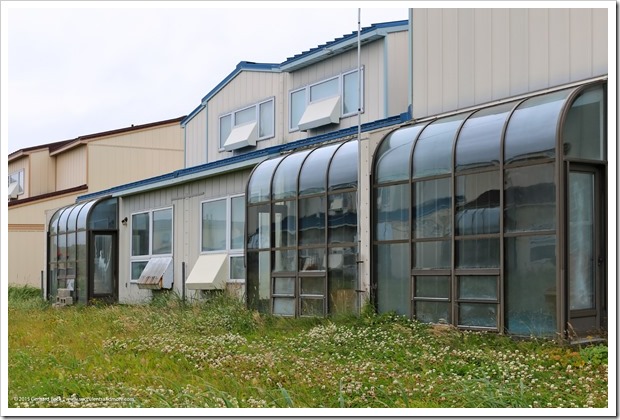
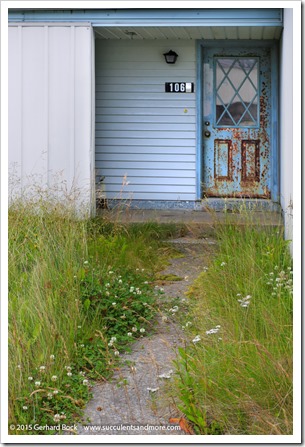
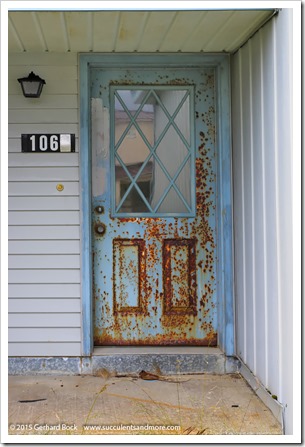

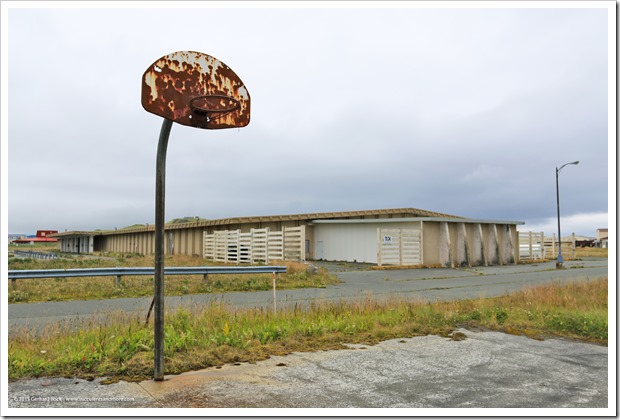


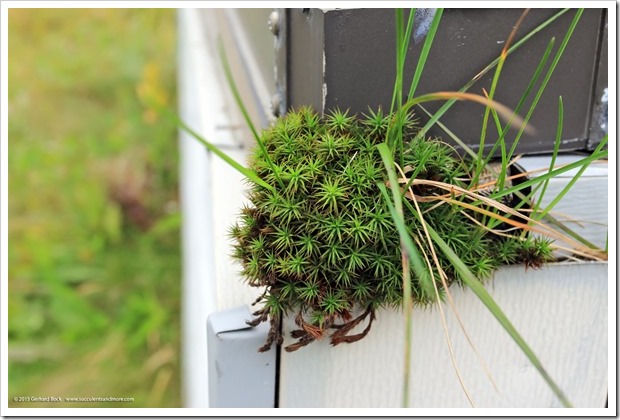
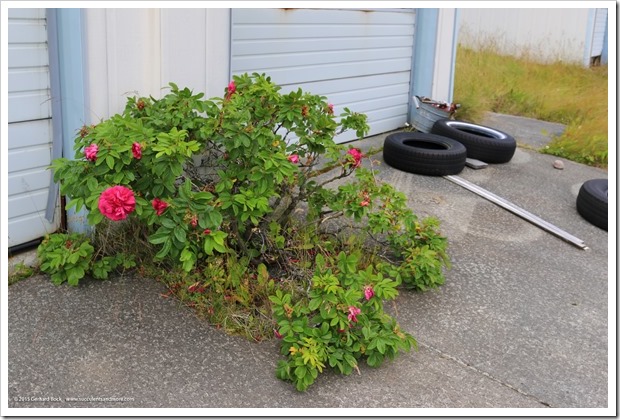
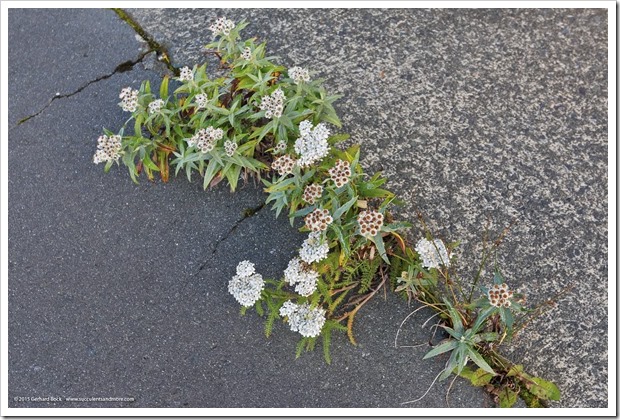

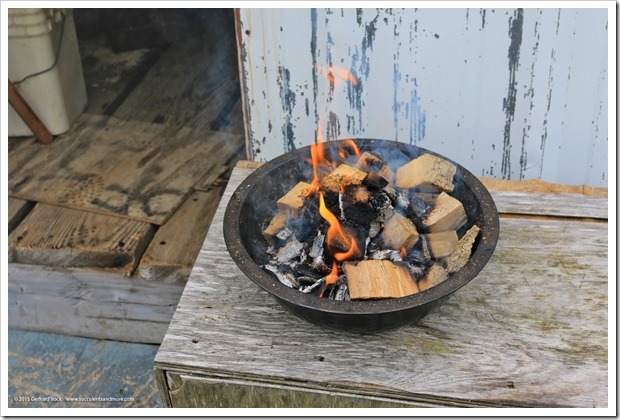

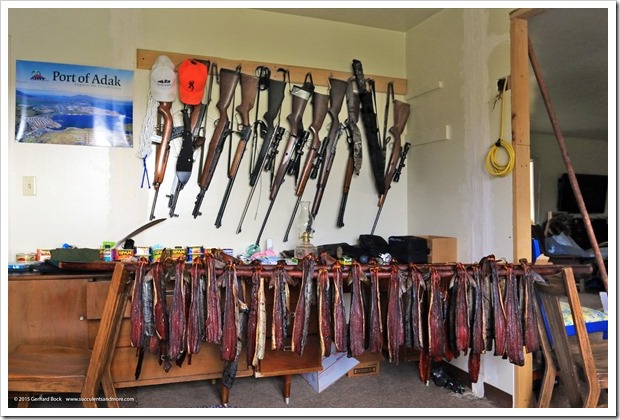

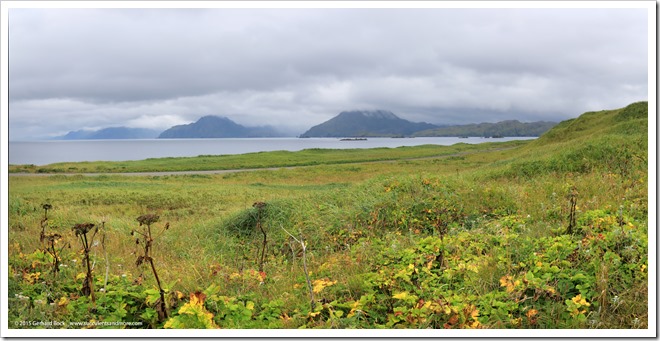
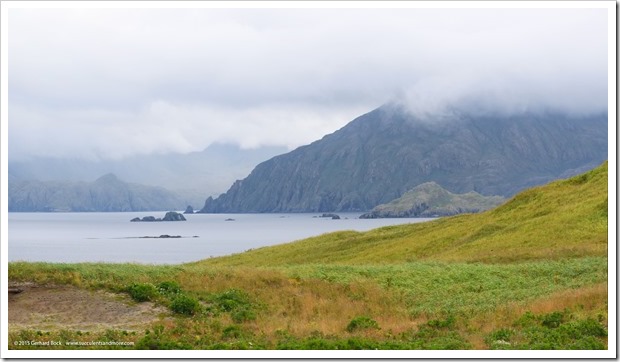
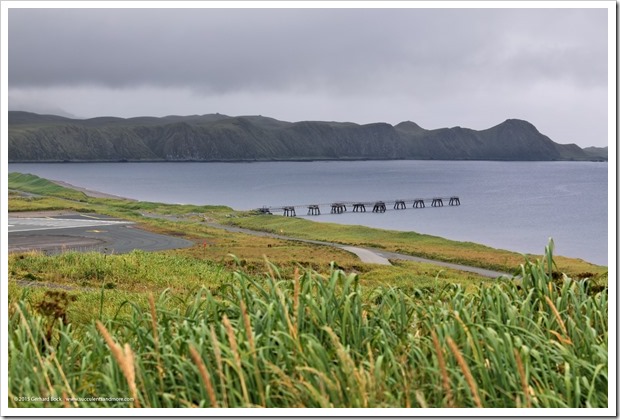


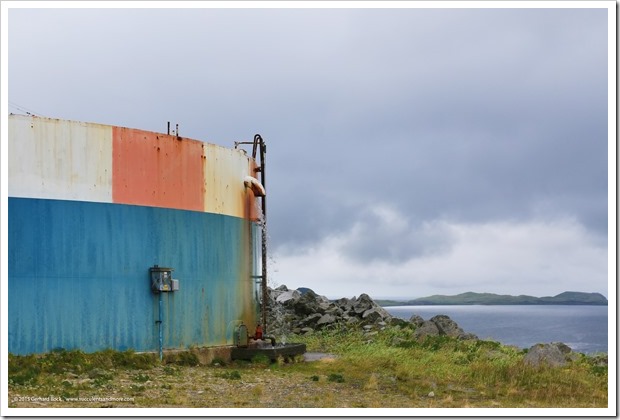
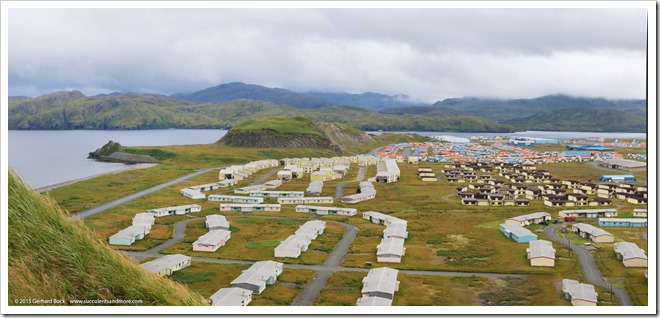
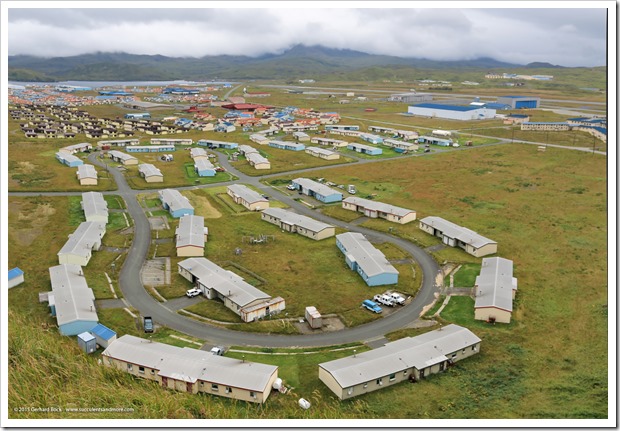




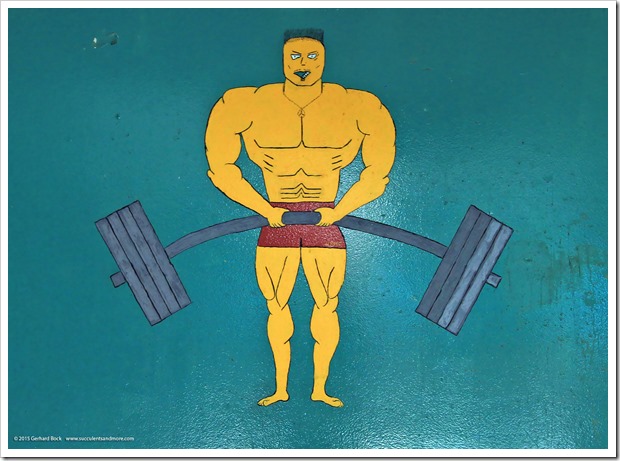
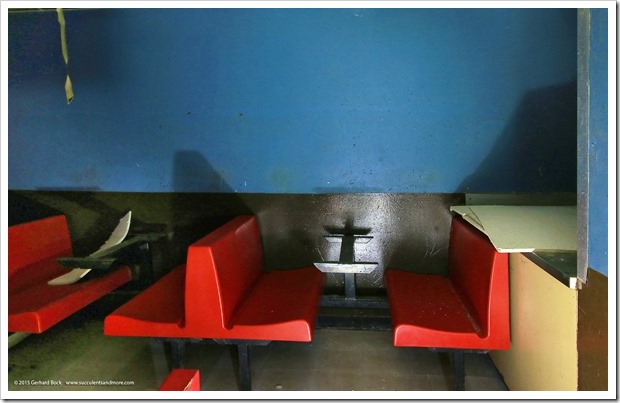
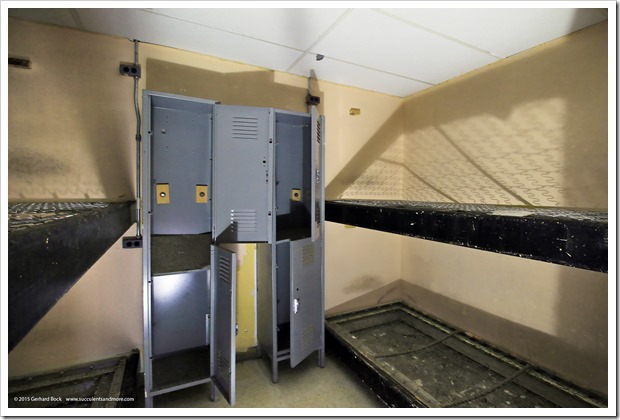

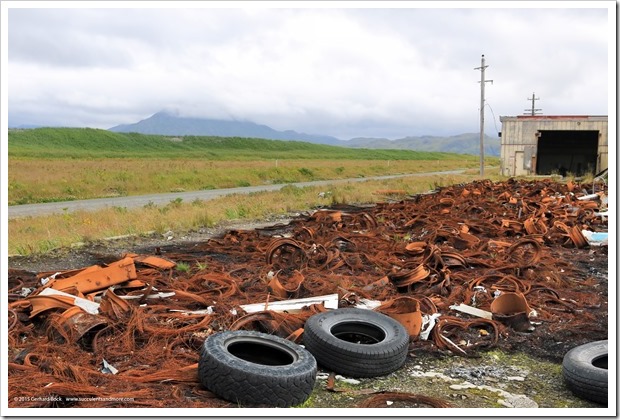
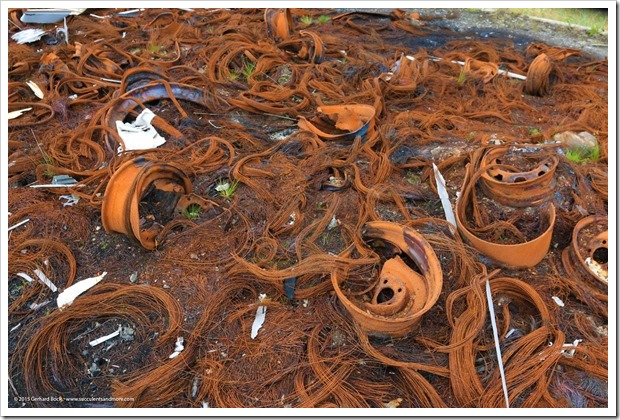



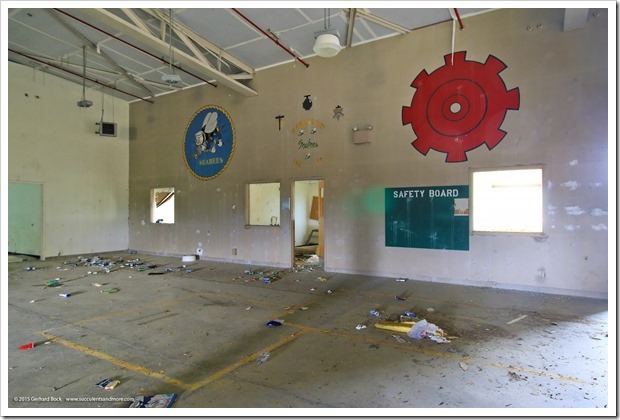
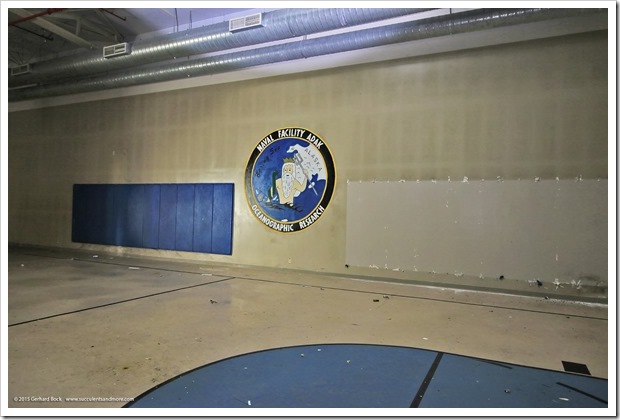
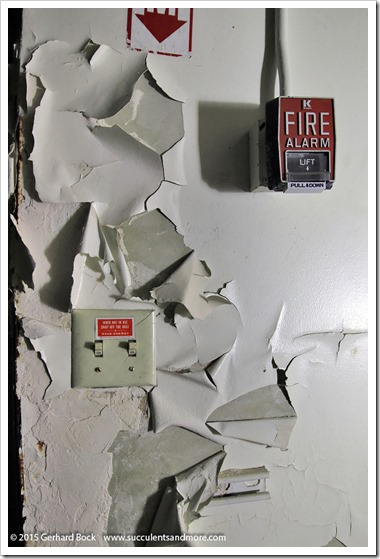

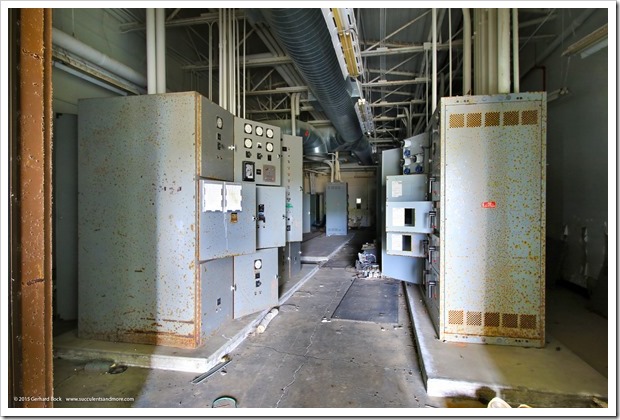
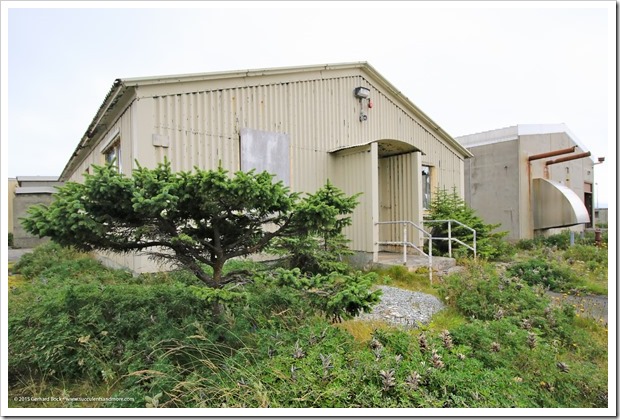
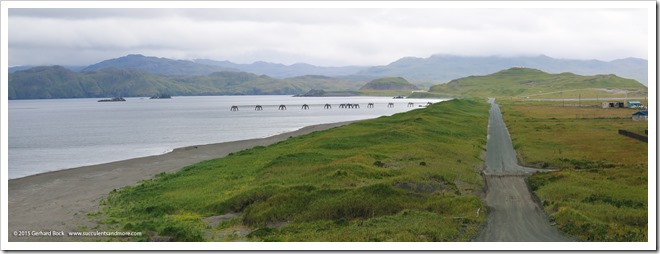
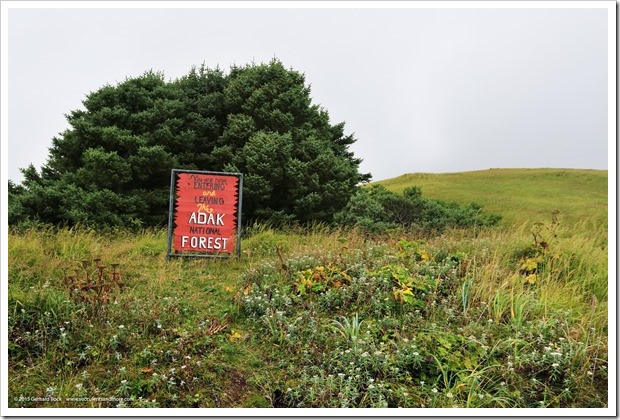

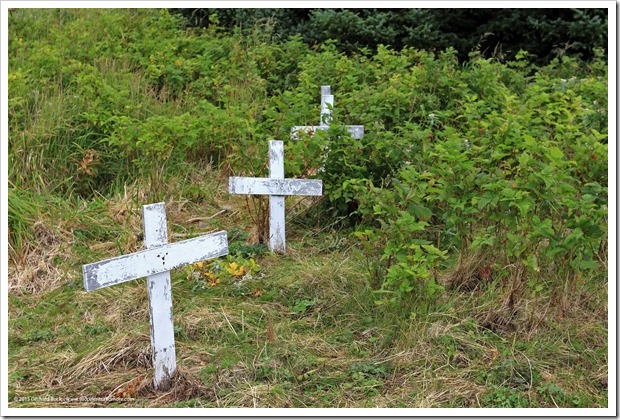

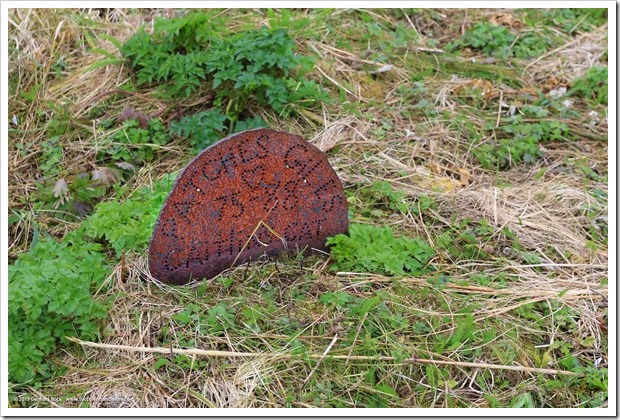

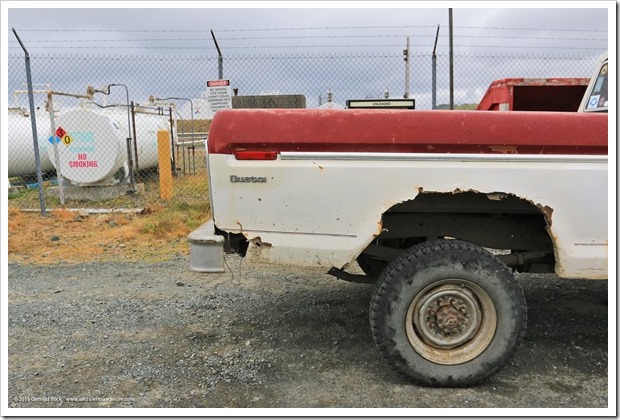
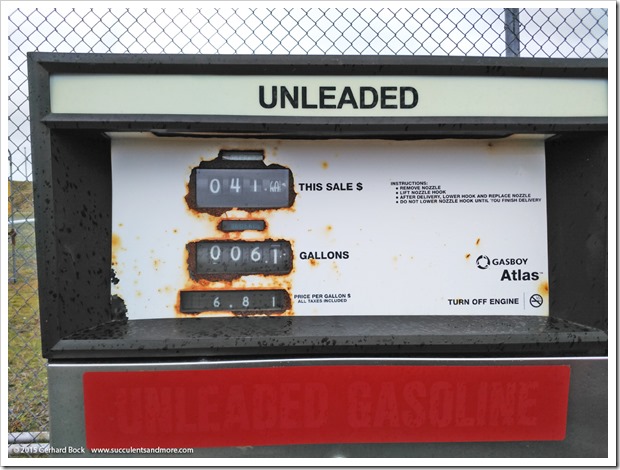
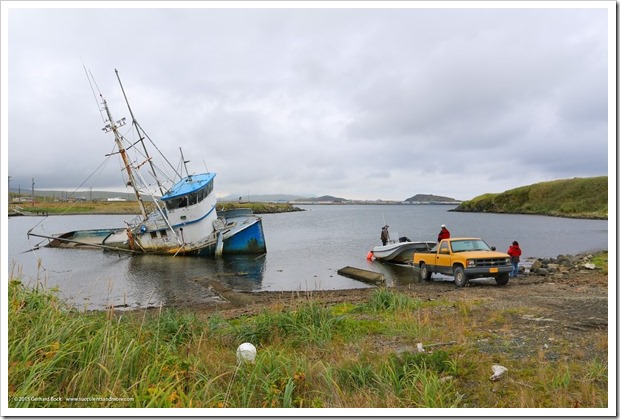

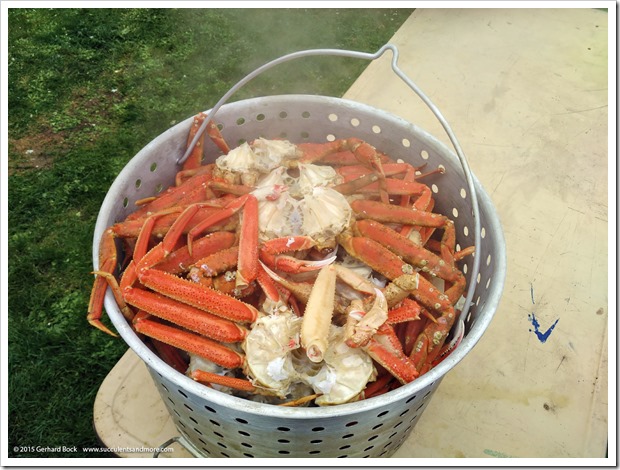

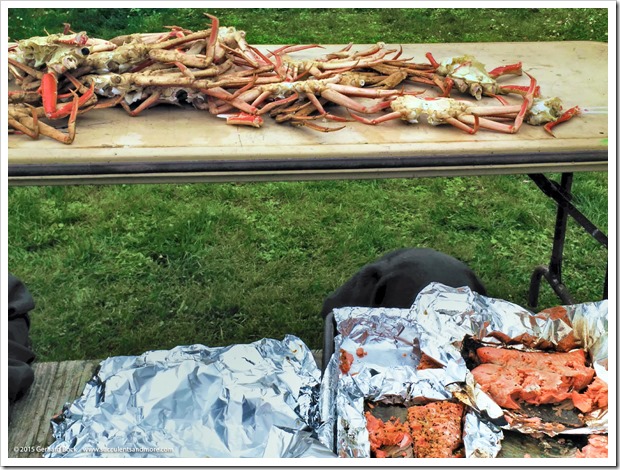
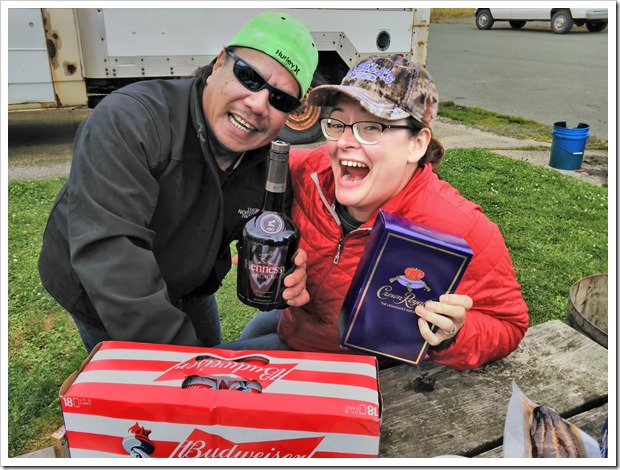

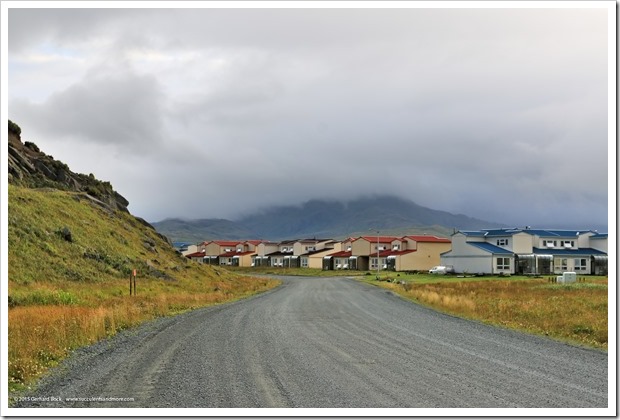
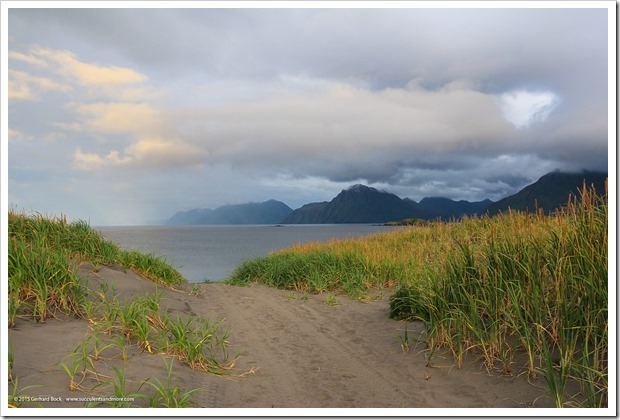
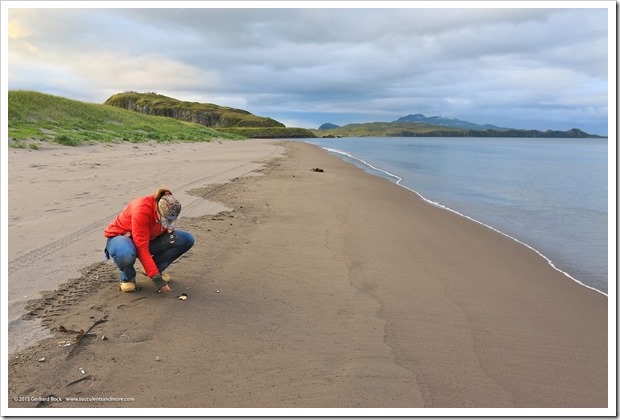

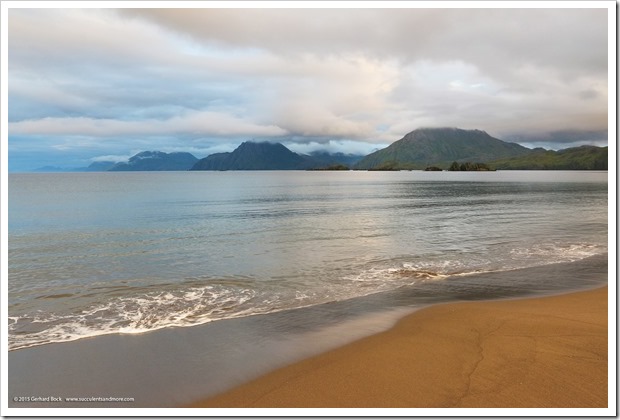


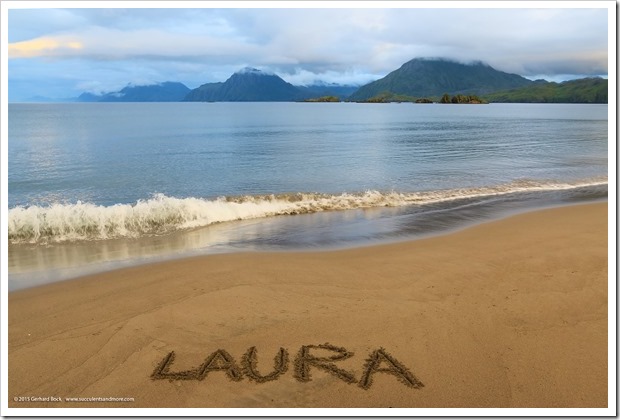
Your birthday card for your daughter is lovely. While I'm impressed by the beauty of the natural scenery, the sight of all those abandoned and deteriorating properties makes me sad. The bunker that once house the soldiers that guarded the "7 doors of doom" has the same claustrophobic quality of a submarine or the former WWII battleship I toured last year. The contrast between those properties and the natural environment couldn't be more stark.
ReplyDeleteAwesome photos -- wonderful virtual tour of a legendary birding spot. Cool to see another perspective! Staggering vistas from the beach at the edge of the world...
ReplyDeleteLike Kris I'm of two minds on these posts. I love and appreciate the natural beauty, as stark as it may be at times, and I'm saddened by the abandoned constructs. I guess it's because things are a bit harsher there that Nature has not reclaimed the buildings more quickly -- like you see with Chernobyl and other abandoned cities.
ReplyDeleteI like the "making do with what you have" attitudes though!
so many memories. So sad, but yet still so beautiful. My second duty station 88-92, had my first child here.
ReplyDeleteI worked at the OPS building by the runway; I use to brief at the NAVFAC. I lived in one of those houses with sunroom like windows. I always said, "I was so blessed to have experienced a place like this." Tours were 12mo --I extended three times. Most couldn't stand it, but I loved it. Yes, king crab, beer battered halibut, salmon, caribou, octopus --all great.
Thanks for sharing this. If I find them, I need to share my pics!
My mom made beer battered halibut and king crab all time when we were there as a kid. I was little, but it was the best experience I ever had
DeleteThat sounds like a wonderful memory!
DeleteThe solariums were bound for a Naval base in Hawaii but shipped to Adak by mistake. The Command authorized the residents to make use of them rather than discarding them. I had a former coworker that lived there a while. She told me about the occasional shipment of beverages that would arrive frozen if they were not in insulated shipping containers. It wold be quite the mess.
ReplyDeleteI'm so happy you shared this information. I will forward it to my cousin who still goes to Adak periodically with her business. I'm glad my photos brought back some good memories for you.
DeleteI looked over your photos, and they were great. Some weren't duplicated anywhere else. The photos really showed off the town. I'm writing a novel and our good guys are hiding out from the Feds on the island under the cover of making a sci-fi movie. Lux-4 on Amazon. Thanks for the pictures.
ReplyDeleteHey CaptKen, that makes me happy to hear!
DeleteI was stationed in Adak from about May 1971 til June 1972 - none of the pictures I've seen online are of that period. There was a king crab processing plant there and we used to buy cooked king crab still hot for $10 for a large military issue clear trash bag full....it was heaven. We would spend some weekends in the WW2 quonset huts drinking beer eating king crab, bbq'ing ptarmigan and frying halibut with the famous Adak beer batter recipe. The Soviet fishing/spy vessels were captured when I was there and the captain was tried in Anchorage. The experience was unbelieveable. It was a very vibrant community then, not the abandoned place shown in most pictures now. I worked as flight ops yeoman and later (during Soviet spy vessels' capture) for the CO of the base. When I left in June 1972 it was snowing so hard the we sat on the runway for almost 2 hours before we took off. So many stories.
ReplyDeleteI love hearing stories like yours. Looking back, I bet there weren't many places like Adak!
Delete